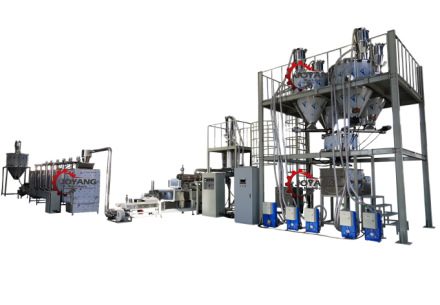Industry news
Twin-screw extruders and pellet machine differ significantly in fish feed production, primarily in terms of process principles, finished product characteristics, production efficiency and cost, and applicable scenarios:
I. Core Process Differences
. Extruder (Twin-Screw)
High-Temperature and High-Pressure Extrusion: The raw materials are steam-conditioned (moisture content 25%-35%) and then instantaneously expanded under high temperatures and pressures of 110-200°C, forming a porous structure.
Screw Structure: The twin-screw extruder achieves strong shearing through frictional extrusion, enabling precise density control (for buoyant/sinking feeds).
. Pellet Mill
Physical Pressing: The raw materials are steam-conditioned at approximately 80°C (moisture content 17%) and then extruded through a ring die by rollers, eliminating the need for expansion.
Simple Structure: Single-stage extrusion, relying primarily on mechanical pressure to form dense pellets.
II. Comparison of Feed Characteristics
Stability in Water:
Extruder: Remains in place for 12-6 hours, reducing water pollution
Pellet machine: Easy to disperse
Digestibility
Extruder: 90% starch gelatinization, high nutrient absorption
Pellet machine: Gelatinization approximately 60%, low digestibility
Density Control
Extruder: Flexible production of floating or sinking feeds
Pellet machine: Can only produce sinking feeds
III. Production Efficiency and Cost
Twin Screw Extruder Advantages
High Capacity: Twin-screw extruders can produce 2-8 tons per hour, suitable for large-scale continuous production.
Expandable Functions: Capable of processing high-fat formulas (fat addition ≤ 30%).
Pellet Machine Advantages
Low Investment: Equipment costs are only 1/3-1/2 of those of an extruder.
Low Energy Consumption: No high-temperature or high-pressure processes, reducing power consumption by over 30%.
IV. Recommended Application Scenarios
Choose an extruder:
Requires floating feed (such as sea bass and trout), a high-fat formula, or large-scale production (annual production ≥ 10,000 tons).
Choose a pellet machine:
Small farms, sinking feed (such as carp and shrimp), or budget constraints.


